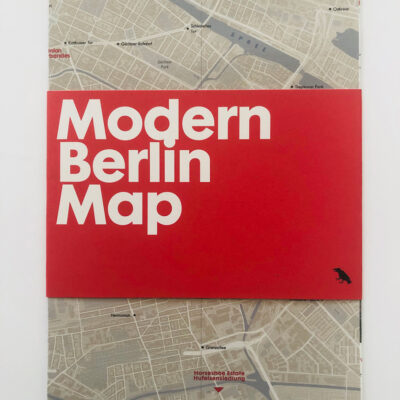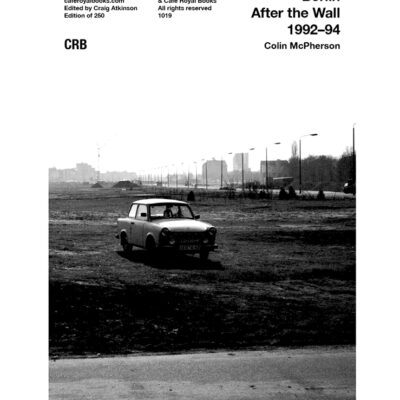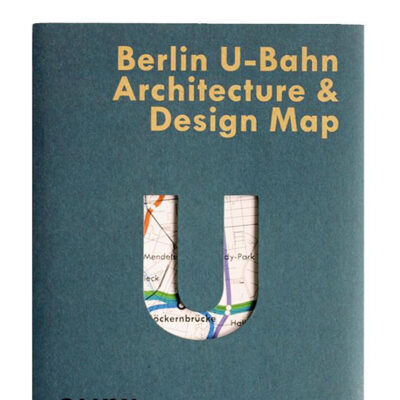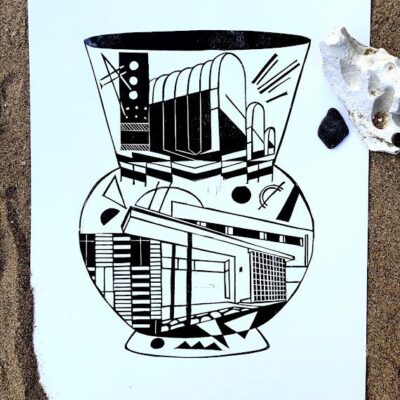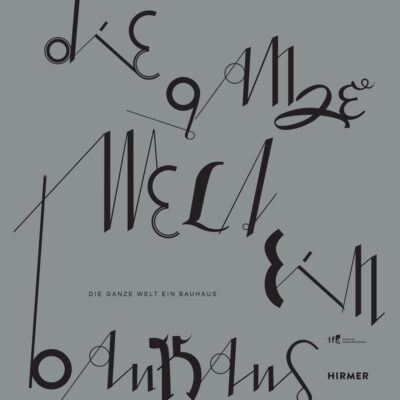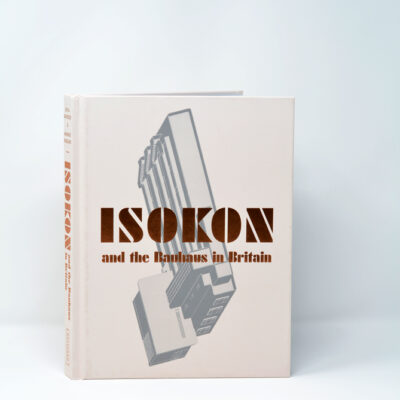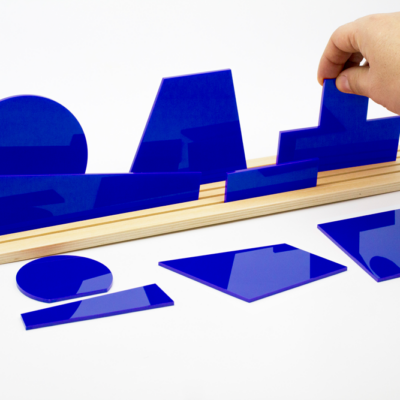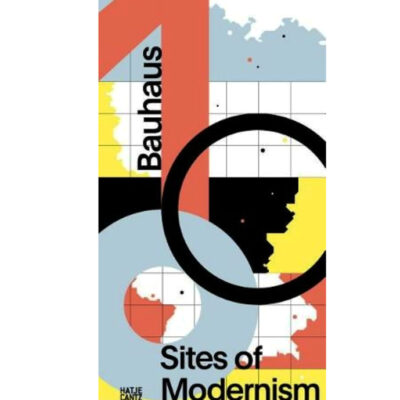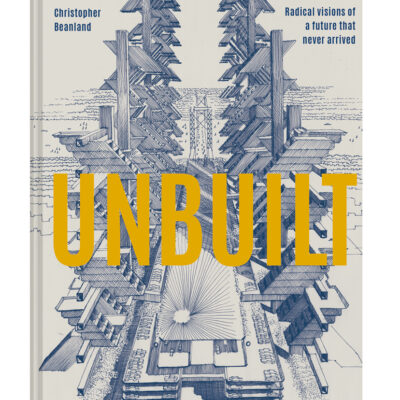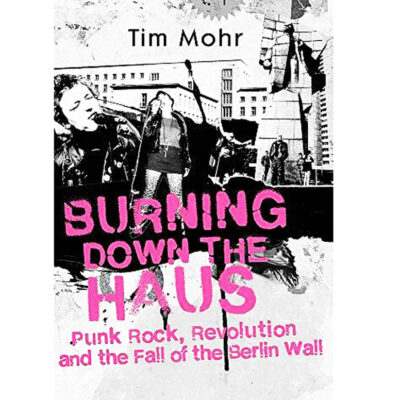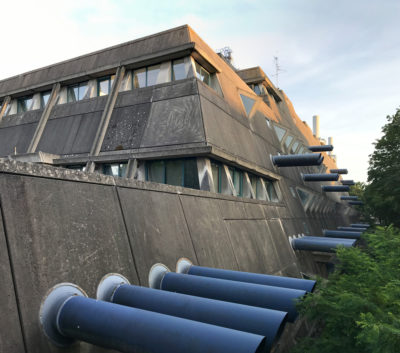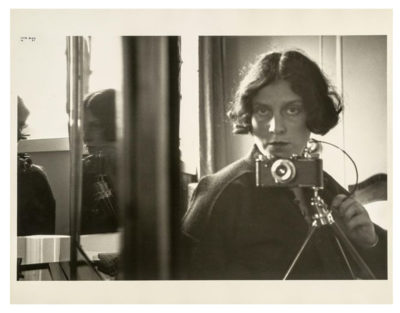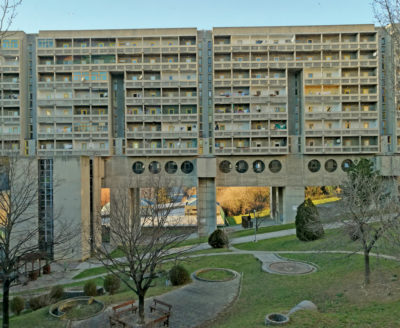Berlin’s Concrete Pallasseum and What Lies Beneath
A chance discovery leads to a tale of WW2 concrete bunkers, Duke Ellington recordings and the dark underbelly of history beneath a brutalist housing estate in the heart of Berlin.
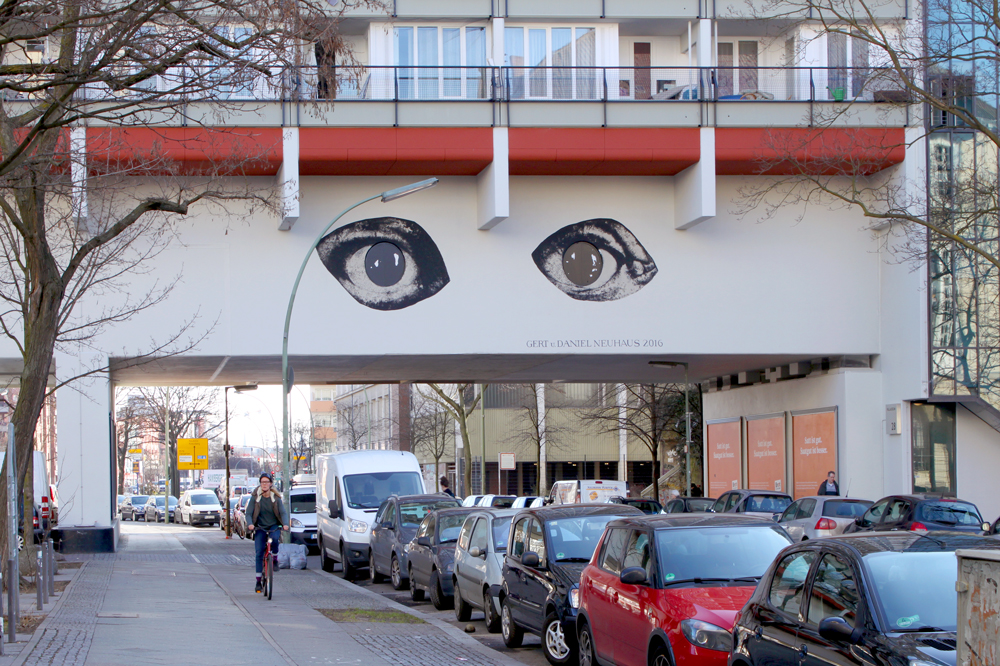
Pallasseum Berlin
Dario Lorenzini loves photographing seriously brut concrete architecture, ‘born in Viterbo, a historic town close to Rome and raised playing with dinosaurs. Maybe I never grew up, and now my dinosaurs are off-scale brutalist buildings.’
He shares with GreyScape about his chance discovery of the Pallasseum; I decided to visit Berlin in 2017, I’ve always been fascinated by the city’s post-war history, a city-bound by its divisions in all its opposites and contrasts. I wanted to discover the impact of 28-years of segregation and naturally, I was particularly keen to explore the historic eastern ‘ost’ sector, the Soviet one, for a heap of reasons. Soviet monumental art, mosaics and architecture has always figured high on my interest list, particularly the imagery focused on the bravery of the Soviet WWII soldiers, and how the art elevated the simple worker toiling for the State to the level of hero, portraying them as model members of society whilst making clear that their life was rooted in everyday tasks.
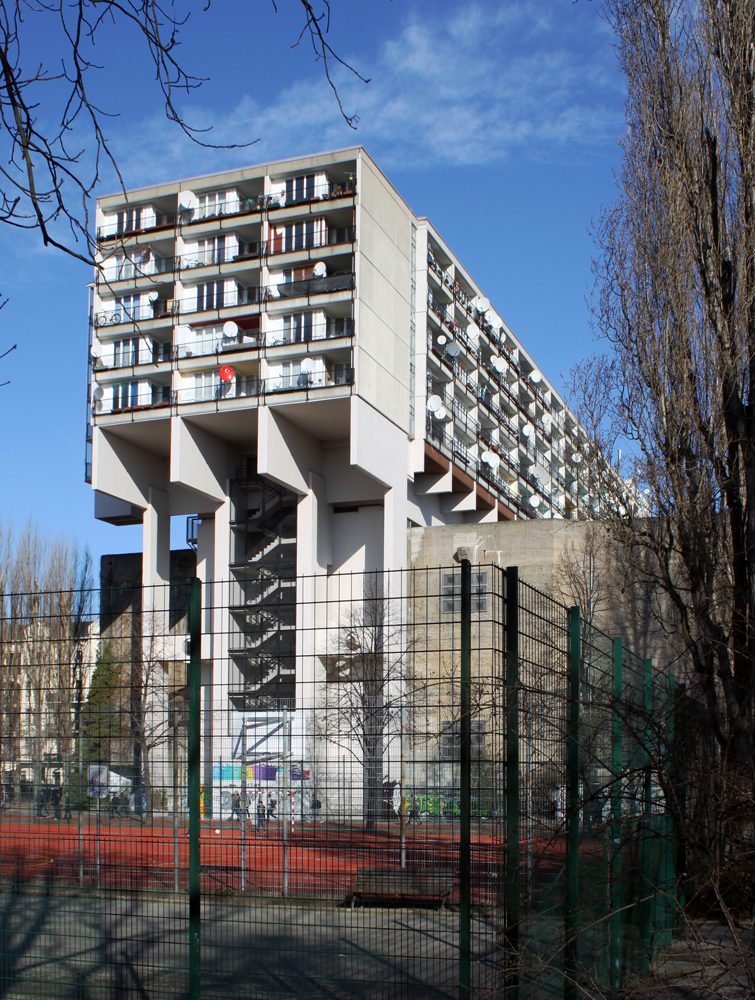
Pallasseum and Hochbunker, Schöneberg, Berlin
How did you discover Pallasseum? It’s not on the regular tourist trail?
I do a lot of prepping, marking places on Google Map, and to be honest it was whilst I was staking out spots to visit that I noticed this huge concrete estate near my hotel, I hadn’t heard of the Pallasseum but I could see from the satellite map that it was just the sort of thing that was right up my street. I’m very keen on ‘off-scale’ housing developments, although I think some architects and urban planners feel they are now an obsolete model for a city. Today’s planned estates have more public spaces and fewer cars and pollution.
What’s it like?
When a UFO crash-lands on a district
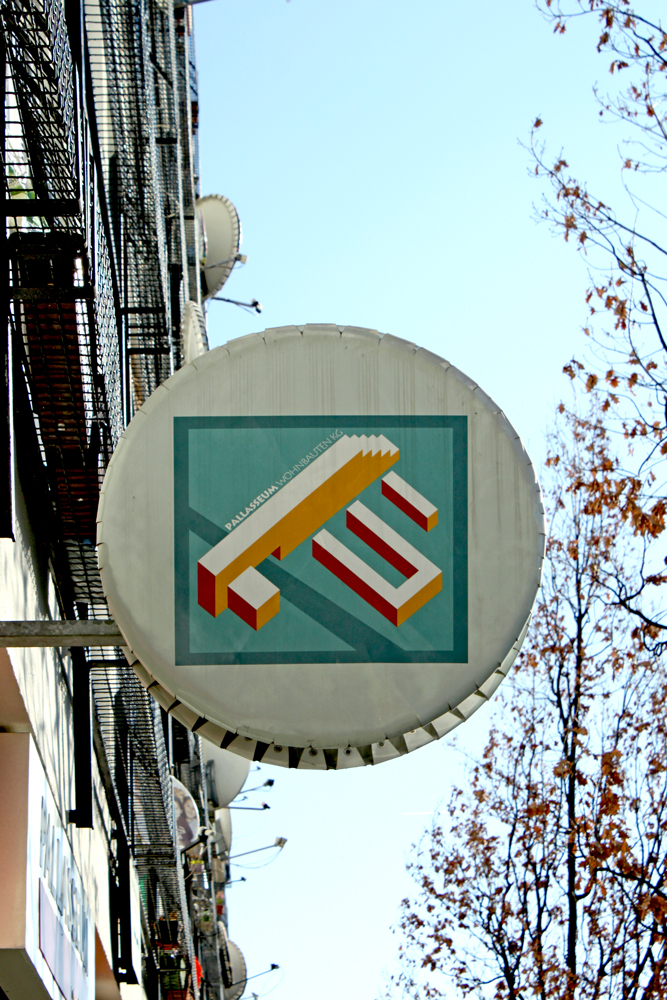
Decorated satellite dish
That’s vivid – how comes?
Simply due to its dimensions and architectural language. To the onlooker, it’s simply too big to relate to any of the surrounding buildings. Moreover, the district is made of simple low-rise housing blocks; the Pallasseum is a severe 10-storey, BIG snake, it’s very modern and functional. There is no visual connection between the Pallasseum and the rest of the district.
An error or accidental stroke of genius… who knows. Wim Wenders found it intriguing and used it as a backdrop to Himmel über Berlin. You use the expression ‘off-scale’ what does that mean to you?
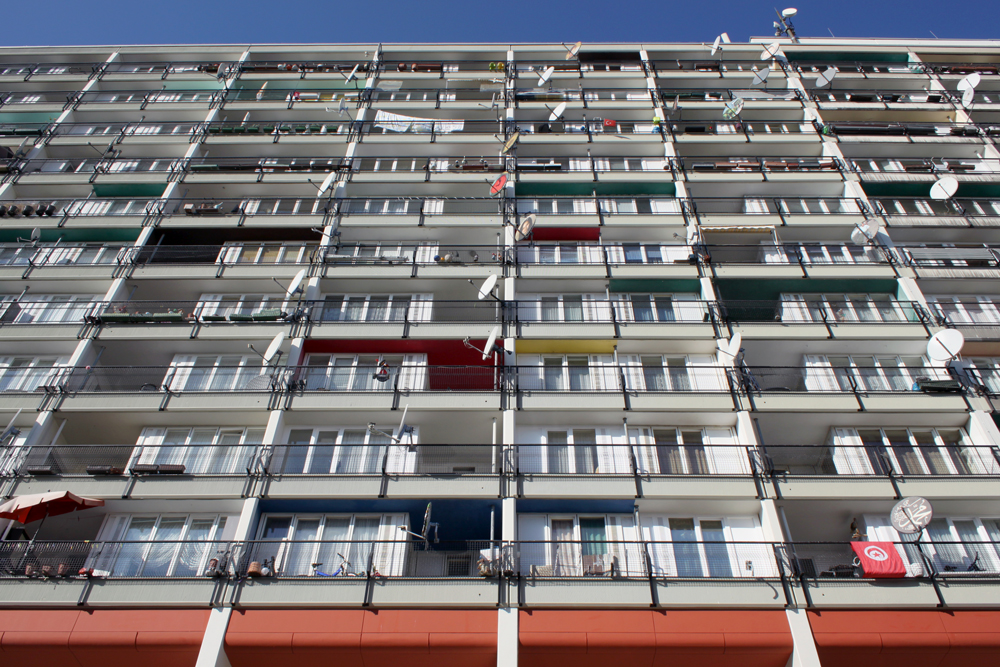
Pallasseum balconies
Huge almost applied to oversized housing estates. This is a perfect example, built without much thought about its impact on the environment. Let’s be clear, I’m not critiquing people’s experience of living in them, simply the sheer scale. They’re right up there with Le Corbusier’s utopian vision of the ‘city inside a building’ which has inspired so many architects and municipalities to build giant macro-structures not only to house the residents but also to offer key facilities and shops. I’m very familiar with this type of social housing in Italy which may not be widely known, Corviale, Forte Quezzi, Tor Sapienza and Rozzol Melara in Trieste, which I’ve photographed (check out the Greyscape Lexicon post with more of Dario’s photos from Rozzol Melara
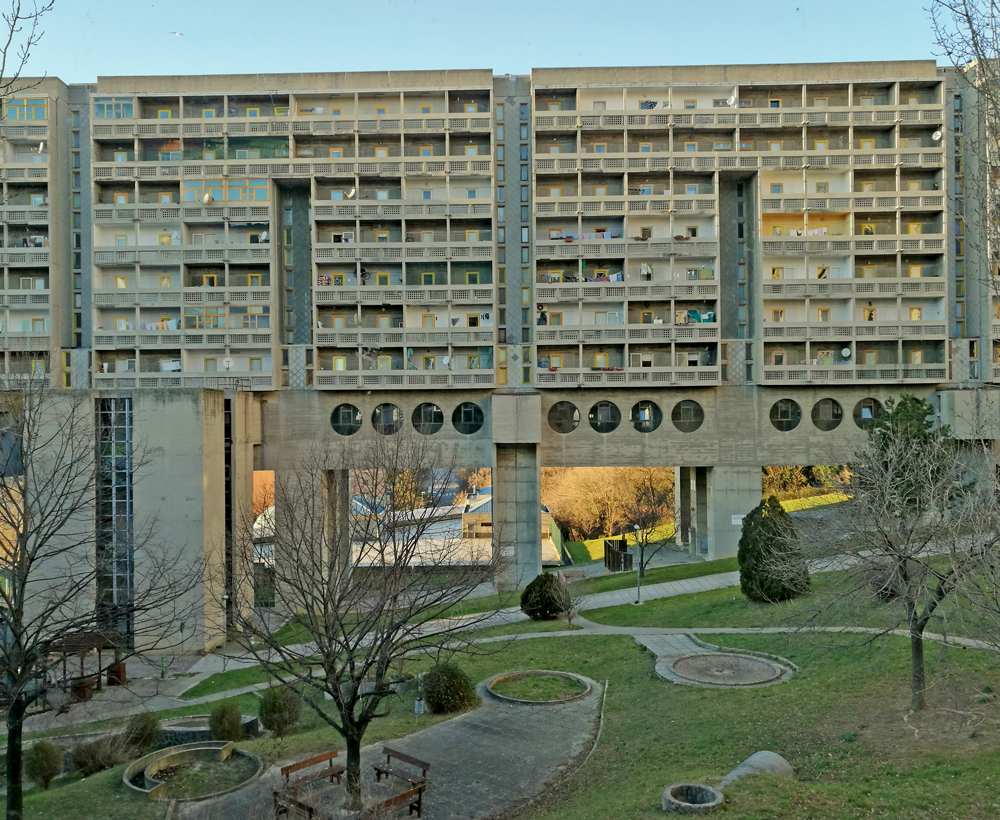 Rozzol Melara
Rozzol Melara
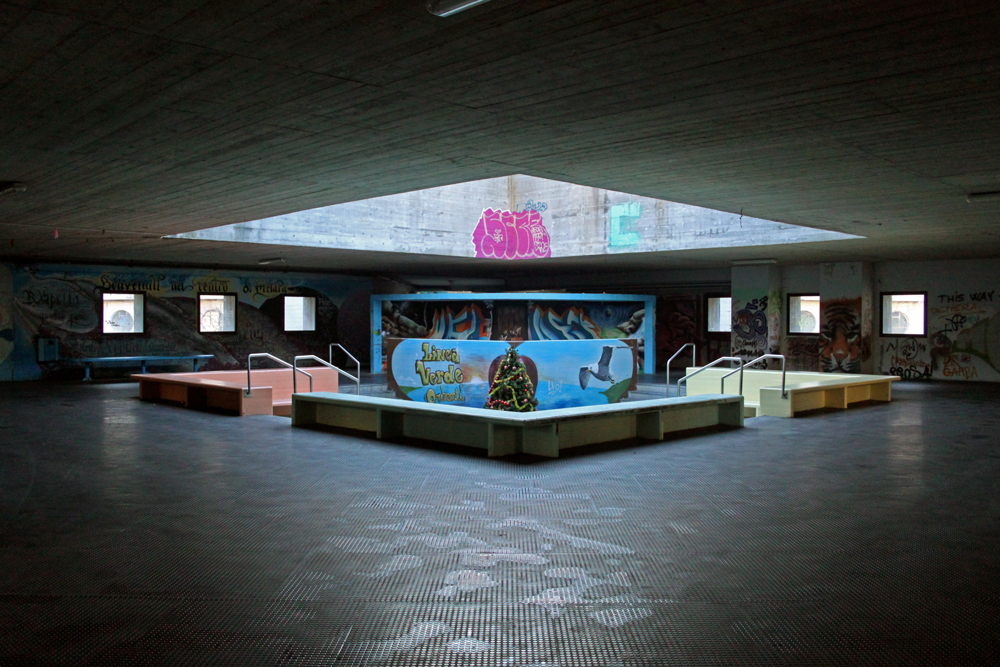
Rozzol Melara Interior
The Pallasseum is known locally for its decorated satellite dishes, did you see them?
Yes, they’re wonderful, a real human touch! Every balcony has its own dish with its own customization: here is the home of the symbolic death of standardization! Every balcony seems to shout out “this is me, I’m not like the others!”. To be honest, I’ve also noticed a lot of Turkish flags and symbols on the dishes.
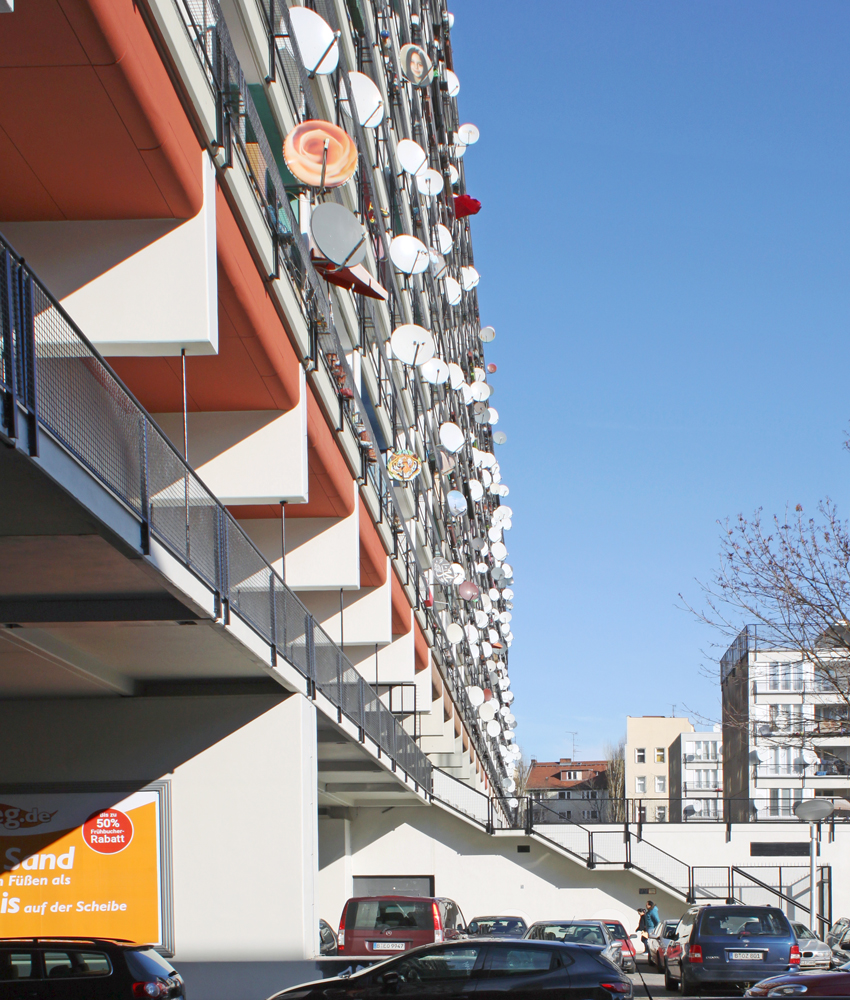
Satellite dishes
Entwined in the history of the Pallasseum is its above-ground concrete bunker, what were your impressions of the bunker and how it forms part of the estate?
I only realized that the estate was actually built over a WW2 bunker when I visited the site, it has GIANT concrete walls, capable of protecting more than just people… I think it would have been very difficult and expensive to dismantle, which is why today, 75 years later, the bunker still exists and Pallasseum passes above it, like a bridge. The interior design is impressive –the first floor has been elevated to allow street traffic on foot to pass under the building. You can’t help but wonder why the architects decided to build it in this way. I mean: why this powerful structure? I’ve speculated, could it be that the bunker still has an important role for the residents? I finished the photography tour at Einrich Von Kleist Park because it’s the only spot in which you can see the front of the building. Once you’ve crossed over the bunker, the Pallasseum ends with four big pillars and tall beams supporting the five storeys above. It looks for all the world like the face of the giant, the muscular side of the building, expressing all his power.
It’s fascinating to look at the Pallasseum and compare and contrast it to the Hansaviertel district and Gropiusstadt, as well as the Le Corbusier’s Unite de Habitation near the Olympiastadion. They are examples of the pulsing core of the post-war architecture, my favourite design period. I love modern architectural history; considering this estate, the architects were facing so many social and urban problems, it’s very interesting to explore how they approached the challenge.
What is clear, wandering around Pallasseum, is that the residents care a lot about their estate which is very impressive, it looks like a very nice place to live. It’s well maintained and struck me about what is possible and currently not happening in similar Italian housing estates
What are the challenges?
The social housing estates’ situation in Italy is more or less in a critical state everywhere, however, it is especially challenging in southern cities like Rome, Naples and Palermo. The idea of who should have priority is not working and people are also living in buildings designated as retail stores and public facilities, people are too often living in miserable conditions and having to use water and electricity illegally. Building maintenance – in nearly all these social housing estates – is sadly zero.
GreyScape took a deep dive to find out the history of the Sozialpalast aka Pallasseum and the concrete bunker below it.
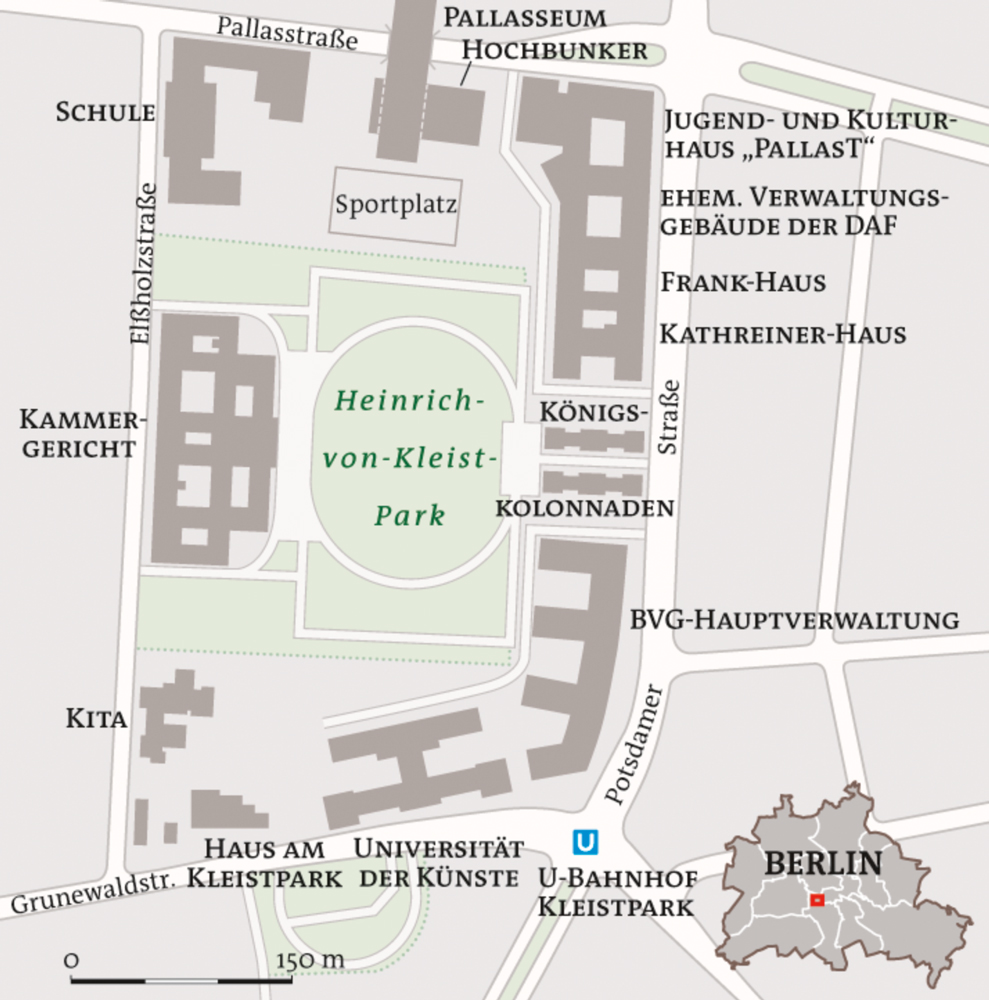
Pallasseum and Bunker Map: Designed by NordNordWest CC BY SA 3.0
The Location
The Sozialpalast aka the Pallasseum is a 12-storey concrete apartment block and a series of smaller buildings, and courtyard in Schöneberg, Tempelhof-Schöneberg, Berlin built 1974-1977. It’s home to 2000 people living in 514 apartments built over and around the ‘Sportpalast’ hoch (high) bunker. Its name is a nod to the iconic Berliner Sportspalast which originally stood on the site. This was an internationally famous spot, in the original city that didn’t sleep. Richard Straus conducted Beethoven’s 9th on its opening night concert, amongst its programme of gems and dark horrors are boxing matches with Max Schmeling, several of Hitler’s speeches, Joseph Goebbels ‘Total War’ speech to rally the nation following the Soviet victory at Stalingrad that turned the tide of war, and post-war Duke Ellington conducting his orchestra playing “Take the A train”
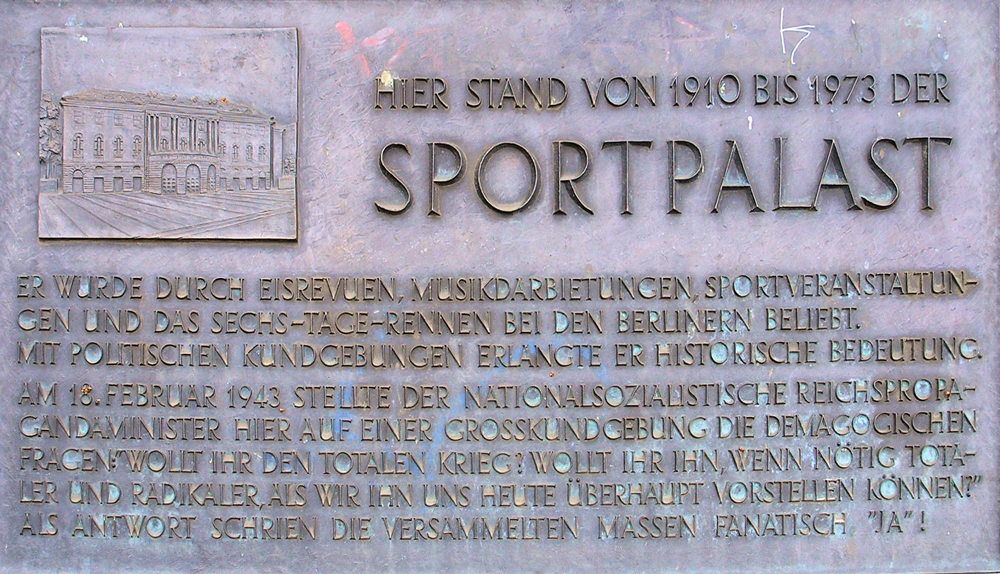
‘Here stood from 1910 to 1973 the Sports Palace…’
The Bunker
The four-storey high Sportpalast bunker was built by Soviet slave labourers, Ostarbeiter, between 1943-1945. They were forcibly brought to Germany with their families and children and housed in harsh conditions in a former school that was repurposed as Augusta Camp (one of 700 in the city). The concrete bunker was part of the Reichspost telephone exchange system and was one of 400 similar bunkers in the city of Berlin.
The surviving foreign slave labourers were freed in 1945 by the Red Army when they captured the city. There is a story that American soldiers tried unsuccessfully to blow up the bunker and you can’t help but think that woven into that is a bit of cold war messaging about the weakness of the Americans versus the skill of mighty Soviet workers. Post-war the bunker became part of the city’s civil defence system, the zivilschutz, and was used to store emergency items, it had the capability of providing shelter for 4800 people. Finally, in unified Germany it was declassified in 2010 and today is part of Berliner Unterwelten E.V, a Government-funded association that maintains Berlin’s underground bunker system. Augusta Camp returned to being a school, renamed in memory of the White Rose group activist Sophie Scholl. In 1977 the bunker was renovated as part of the project to build Pallasseum and again in the mid-1980s. Today it has a memorial programme shared with the former slave labourers and their families. In 2002 a ‘place of remembrance’ was inaugurated in the bunker. In 2010 the interior of the bunker was upgraded to make it a suitable space for exhibitions and in 2011 it gained historical status.
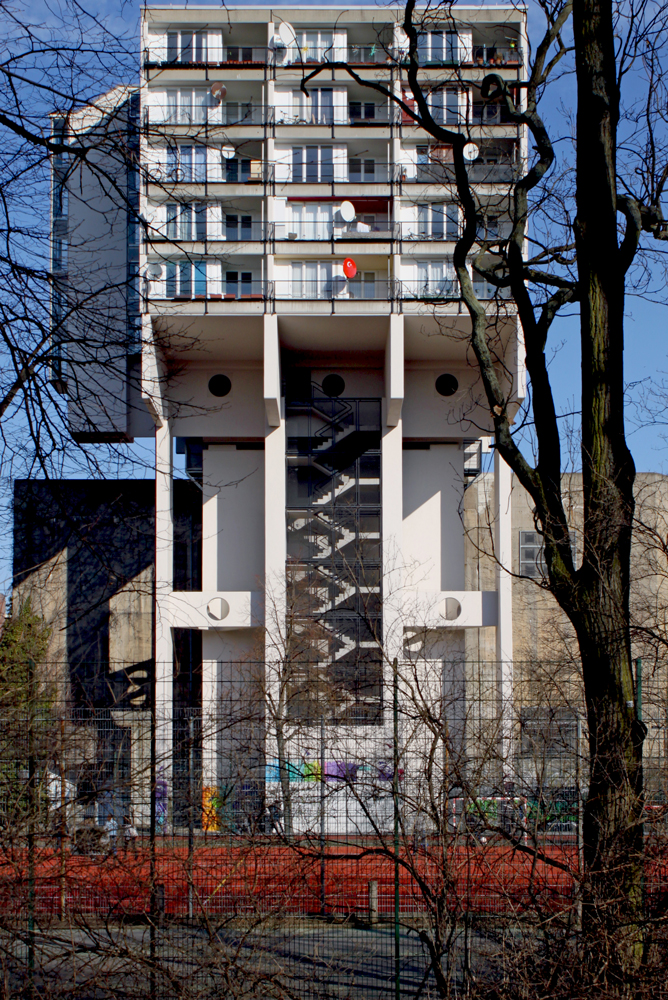
Pallesseum built over the bunker
The Housing Estate
Designed 1974-1977 by Jürgen Sawade, Dieter Frowein, Dietmar Grötzebach and Günter Plessow it was considered an excellent example of modern living however for a time it fell victim to vandalism and became a troubled area to live in. The local council considered demolition, but a local initiative led to upgrading and redesigning of shared spaces and the creation of a park and café. A bad situation was turned around and the neighbourhood was revitalized. Even a name change was made, Sozialpalast became Pallasseum. What makes it especially interesting is that Berlin is grappling social housing developments becoming more and more isolated amongst private accommodation.
What’s on your ‘wish list’ of places to visit?
Moscow, for sure, Stalin’s “Seven Sisters” and all the surrounding districts and of course I’d love to take a trip on the Trans-Siberian Railway to discover Siberia and the remote Asian regions.
You’ve mentioned you’re interested in Spomeniks
Yes, found in former Yugoslavia and other former communist countries. They are huge, actually made to seem larger by their locations deep in the forests and in isolated places. I’m also intrigued by the message they are trying to convey which seems so disconnected to my way of life in Italy in particular, and capitalist society in general. I like Soviet mosaics because they are an expression of socialist society and values, and THESE are far from Italian and western ones!
Your favourite go-to …
Film: The Great Beauty by Paolo Sorrentino (2013)
Book: A Happy Death by Albert Camus (written in the ’30s but published only in the ’70s)
Bucket list: I’m fascinated by the former Communist countries and cities
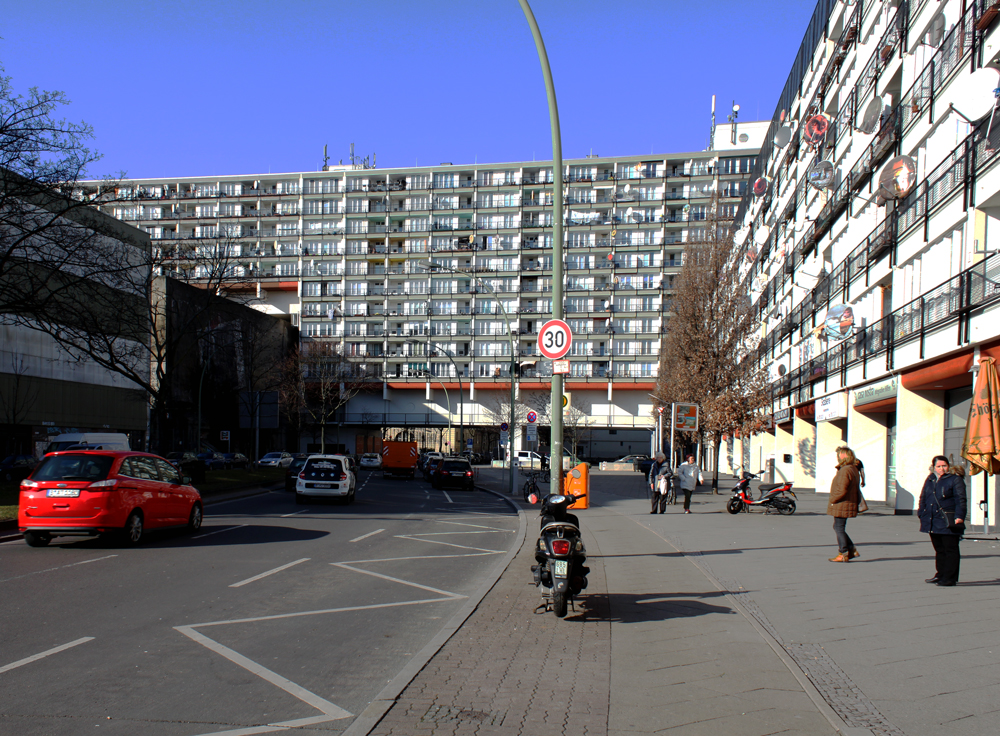
Street view
Visiting Pallasseum
Location: Pallasstraße / Potsdamerstraße, 10781 Berlin
Berlin U-Bahn Station: Gleisdreieck U1/U3 and U2 lines
Dario can be found on Instagram at www.instagram.com/ing.mersault
All Images Copyright of Dario Lorenzini
Image of Sports Palast Plaque CC BY SA 3.0 OTWF Berlin
Learn more about Berlin’s Bunker System BERLINER UNTERWELTEN EV




